Single vs Twin Engines
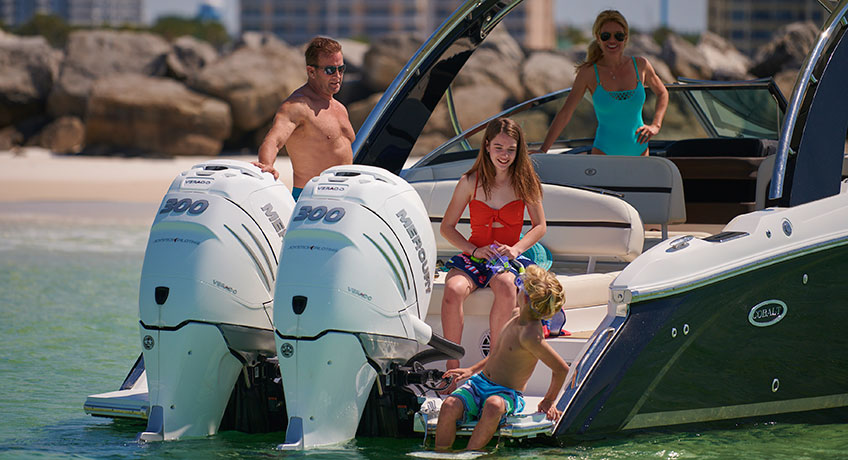
There are many differences between single and twin engine boats. So, let’s talk about a particular model Cobalt that is available in both versions. We will use the R30 and for this discussion we will use the single engine 430hp Volvo vs twin Volvo 300’s. And although this piece is aimed at the R30, most of everything here applies to other Cobalt’s with twin engines.
The throttle/shift control is different for twins.
There are two levers controlling the shift/throttle functions. But there is a button on the twin control you can push thereby turning the twin engine control into a single engine control running both engines as one. When both engines are in neutral, push that button and you will hear a chirp. This indicates the system is ready to operate both engines as one. Simply push the starboard lever back which moves it out of the way. Then the port engine lever, the one closest to the driver, will shift and throttle both engine at the same time. This is a particularly nice feature for the novice driver who would rather not have to use both levers. This feature is an option so you will need to check with your dealer to see if your boat has this or not.
Fuel consumption, top end performance, and low-end performance.
First of all, it does NOT take twice the fuel at a given speed to run the twin. For example, at 30mph, the twin version will use about 25-30% more fuel than does the single. At lower speeds, the percentage difference lowers somewhat. At higher speed, it slightly increases but not much. One of the benefits of the twin is torque. Torque is more important than horsepower for getting the boat to planing speed which is approximately 24mph with twins. With two engines, your boat is producing a lot more torque and the result is better time to plane, especially with the boat fully loaded.
Top end performance is a result of horsepower. With a total of 600hp vs 430hp, the boat is going to go faster with more horsepower. So, the total fuel burn at WOT (Wide Open Throttle) is going to be more with the twin. Hence, more speed.
The main advantage of the twins is maneuverability at slow speeds. You can use both engines as one propulsion system by operating both throttle/shift levers as one. Or you can use the throttle/shift levers independently of each other. When doing this, first position the steering wheel to the approximate center position. Then the operator can put one engine in forward and the other in reverse and the boat will basically pivot on itself. Keep in mind this should be done at idle speeds. To learn how to do this, try it in open water until you get used to the reaction of the boat. And this is just one example of what can be done with twin engines. You will find with practice what works best for you.
Another advantage of twins is safety. If one engine fails, you can idle home on the other. You cannot go fast with just one engine but you will have power steering and you will be able to control the boat. With one 300hp running, for example, you can make about 10mph. Note: In this situation, give yourself plenty of space for maneuvering. It is a good idea to call the dock ahead of time so help is available to help you tie up.
Optional Joystick Controls for Twins
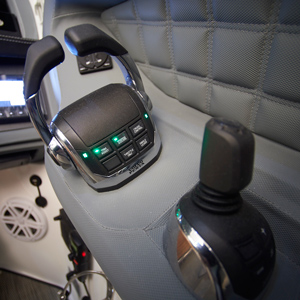
Twin engine boats with Joystick is a very popular option and if your boat has it, there will be a second controller directly behind the throttle/shifter control. This feature allows the operator to maneuver the boat at low speed with the Joy Stick control rather than the throttle/shift levers.
On the Joystick control, there is a button that energizes the system. Make sure both shift/throttle levers are in the neutral position. You will hear a chirp when the system is activated. The steering wheel will lock in place and the system is ready to use.
Gently move the stick in the direction you want the boat to go. The reaction to the movement of the Joystick will not be immediate. You have to allow the system to “catch up”. Most first-time users do not understand this and move the joystick too far and then the engines will build to much rpm and the boat will move too much or too fast. It is suggested the first time you use this system, you do so in open water with plenty of space around the boat. Once you get familiar with the system, you will love it and use it just about every time you maneuver the boat in close quarters. Keep in mind, the wind will influence the boats movement and you compensate with more movement of the joystick. When operating the system, if you move either of the throttle/shift levers or move the steering wheel, the system deactivates instantly and you are back to normal operation. Additionally, on the joy stick control, there is a second button for additional thrust. This would be used when a stronger wind is blowing and gives the operator the ability to produce more engine rpm and more thrust than in the regular joy stick mode.
The same feature is available on MerCruiser powered boats. It is called Axius and the functions are the same. The main difference is with Merc’s, you simply put the shift/throttle levers in neutral and then use the stick control.
Again, it is suggested that when you are first using the Joy Stick or Axius control, you do so in open water away from docks, etc. until you get familiar with the systems.
Battery Switch(s)
In newer boats, with twins, there are two battery switches, one per engine. Simply turn both to the “ON” position. The Cobalt electrical system will automatically charge the house battery with port engine. When you turn the engines off, the system keeps the engine batteries isolated from the boat so you have a fully charged battery for restarting the engines.
If you have an older twin engine Cobalt with either Joystick or Axius, the battery switches may be different and have more selections. Simply follow the plaque by the switches for proper battery alignment. An as always, please check with your Cobalt dealer for more detail about these switches or anything else discussed here.
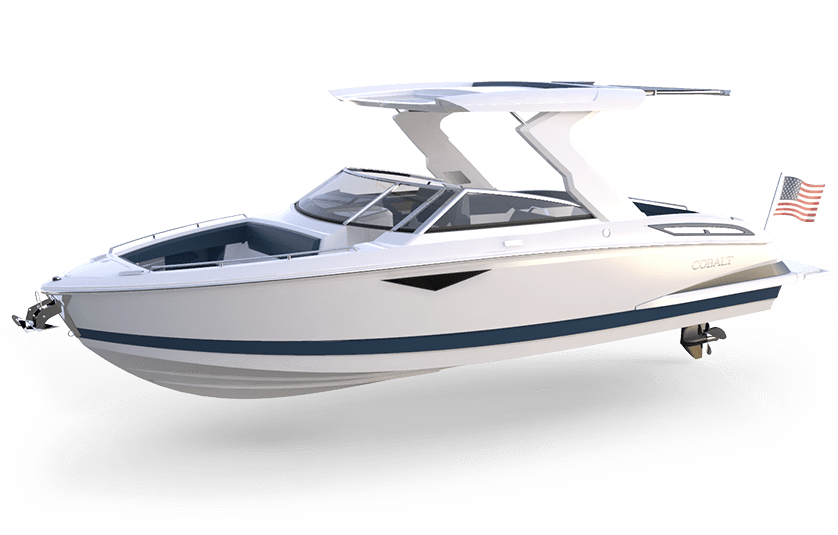 A29
A29  R4
R4 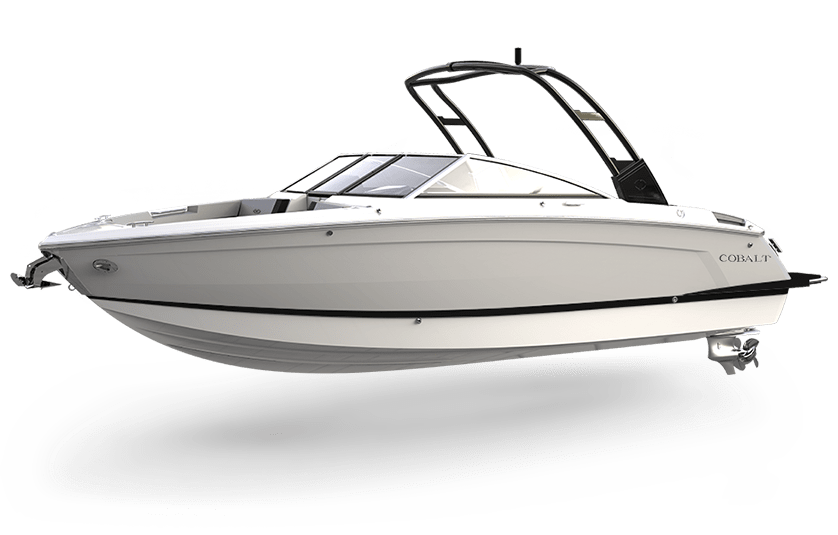 R6
R6  R8
R8 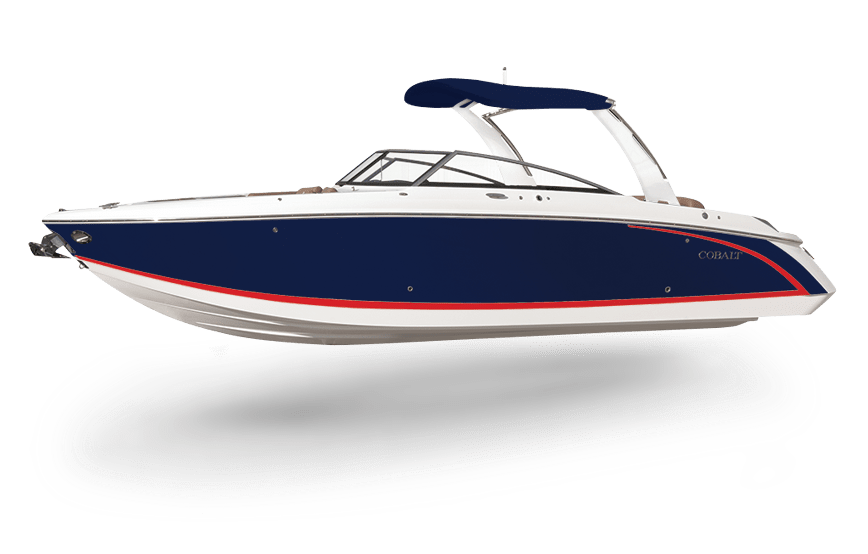 R30
R30  R31
R31 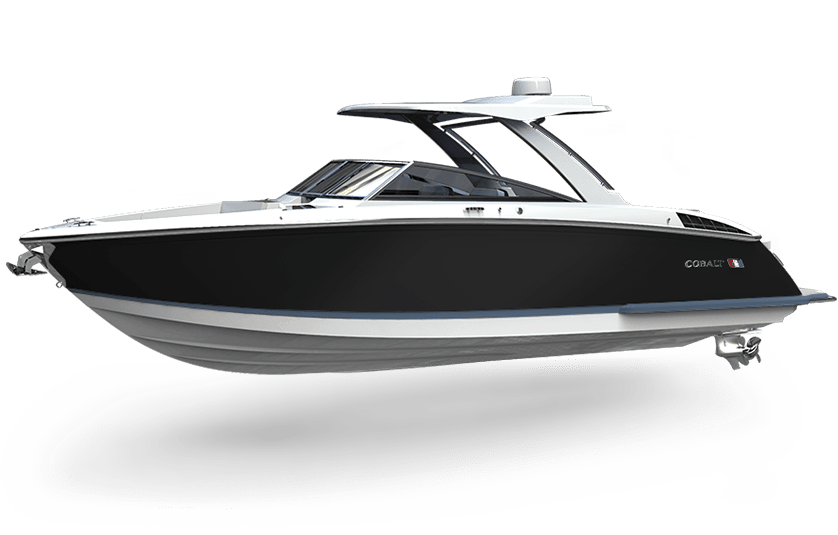 R33
R33 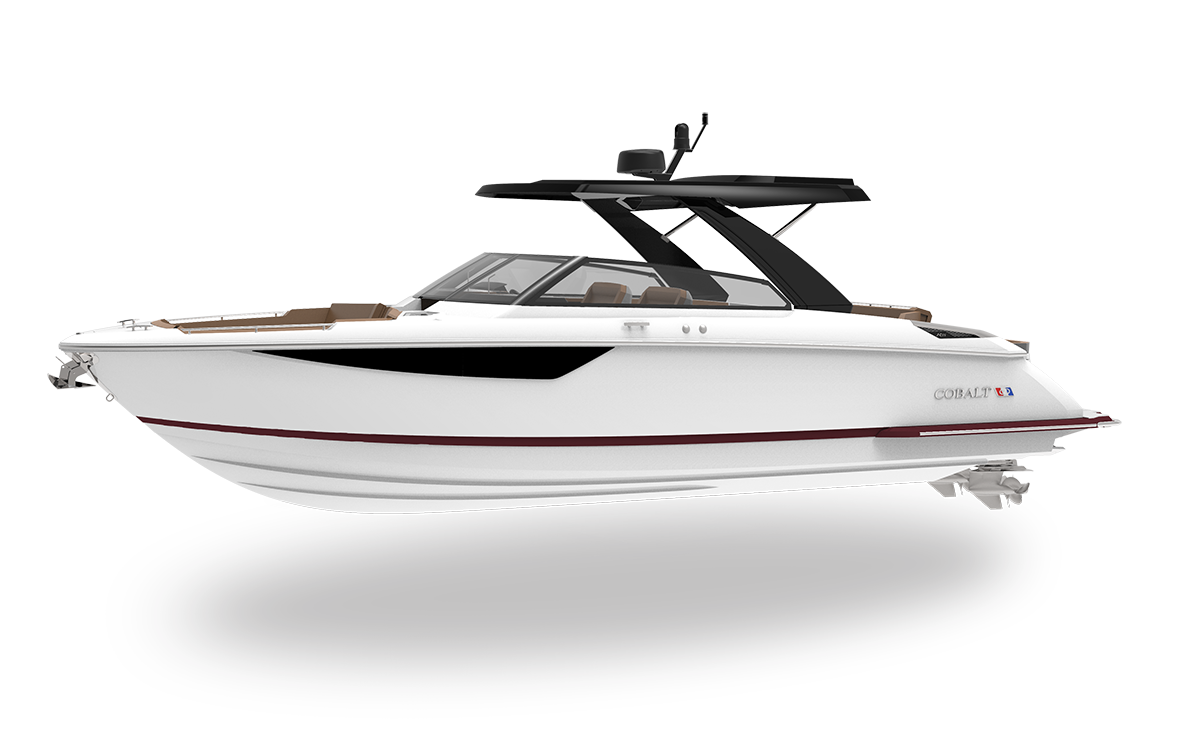 R35
R35  CS22
CS22 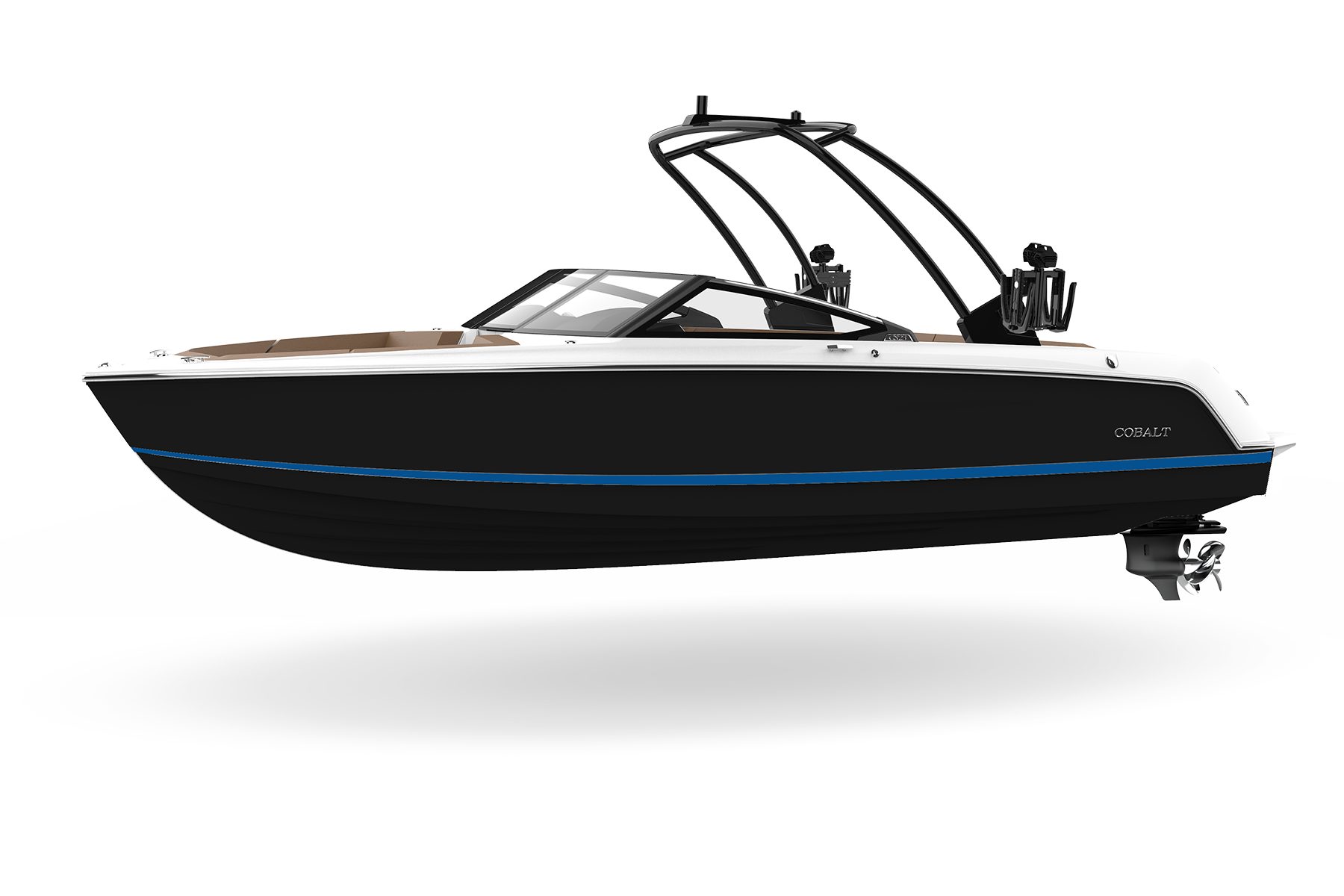 CS23
CS23 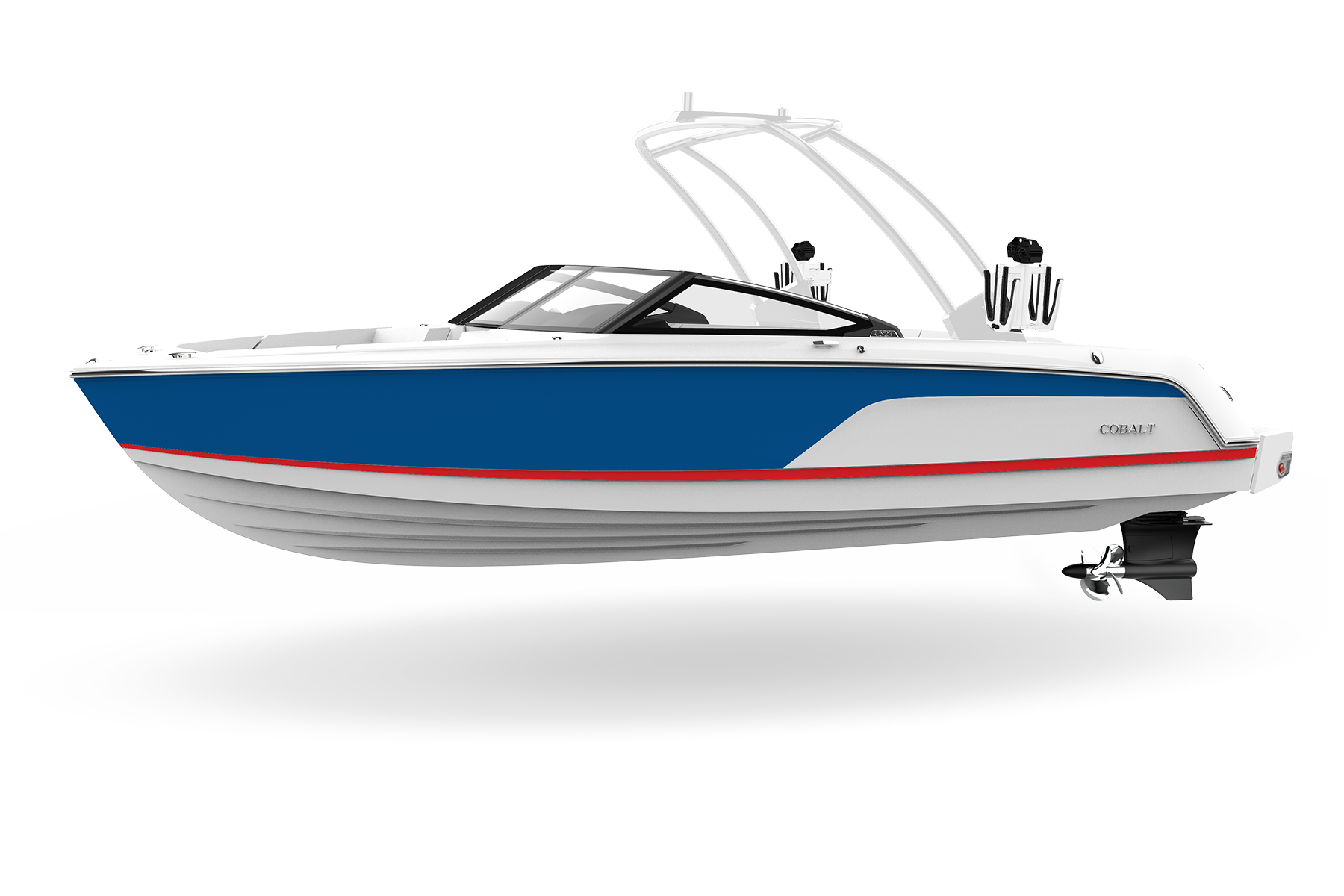 CS23 Surf
CS23 Surf 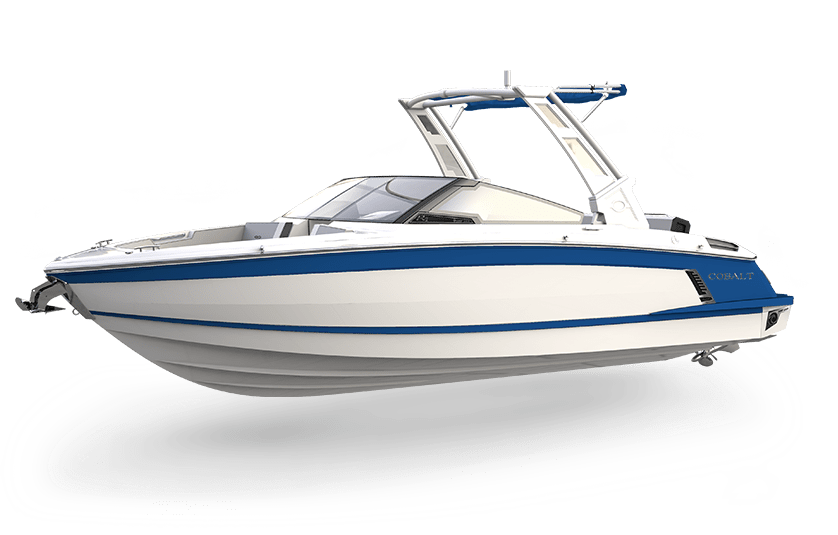 R4 SURF
R4 SURF  R6 SURF
R6 SURF 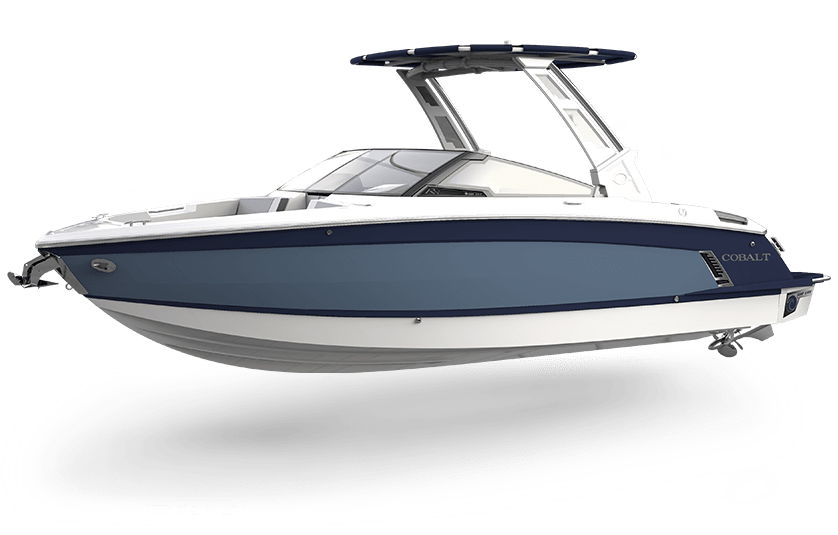 R8 Surf
R8 Surf 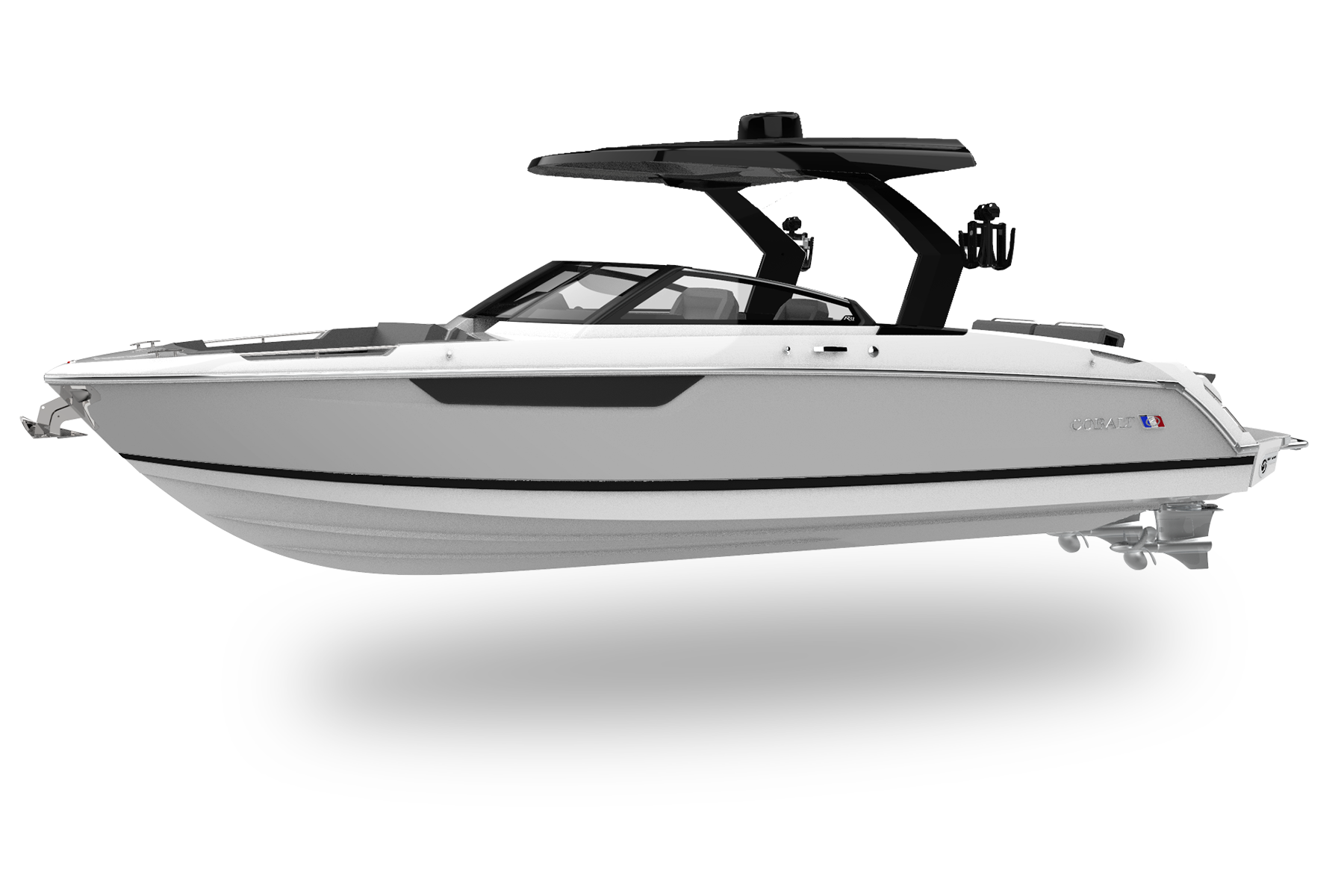 R31 Surf
R31 Surf  R33 Surf
R33 Surf 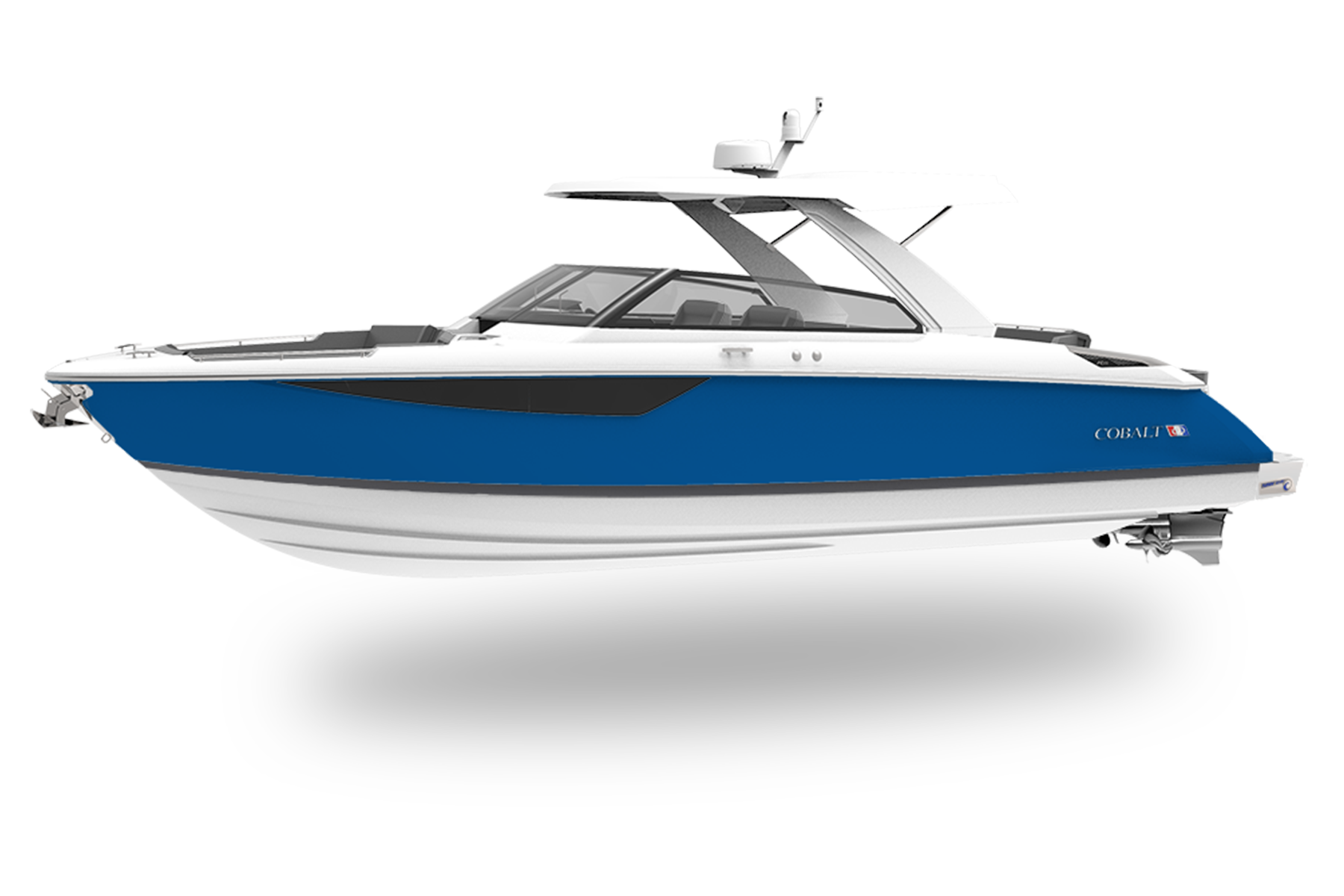 R35 Surf
R35 Surf  R4 OUTBOARD
R4 OUTBOARD 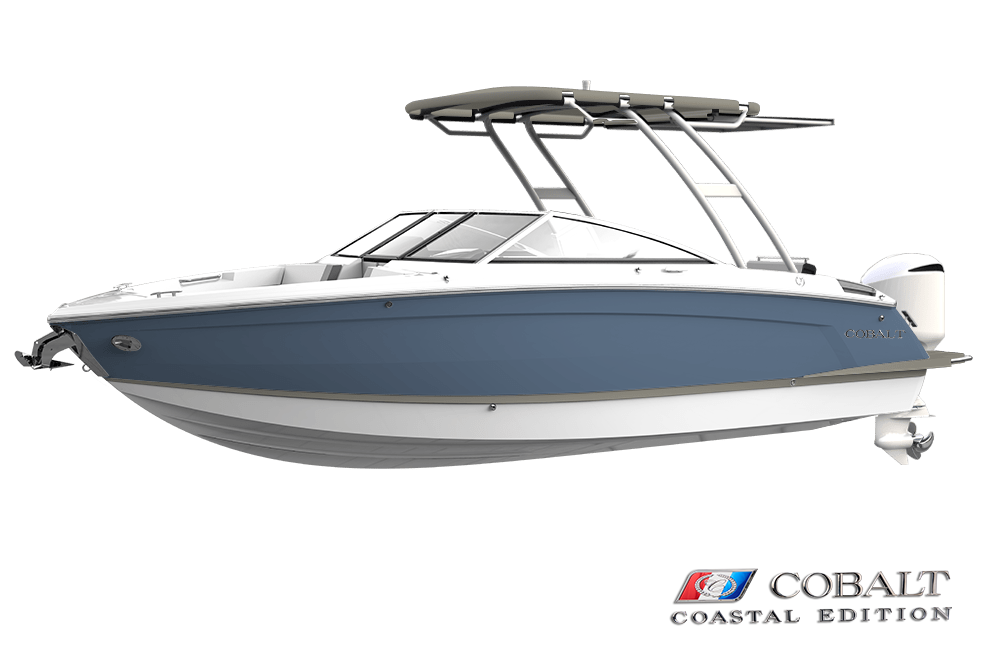 R6 OUTBOARD
R6 OUTBOARD 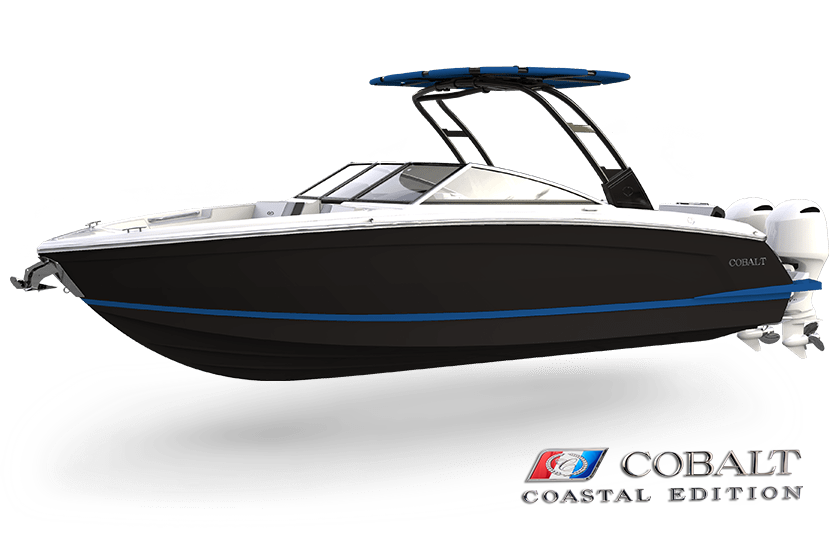 R8 OUTBOARD
R8 OUTBOARD  30SC Outboard
30SC Outboard 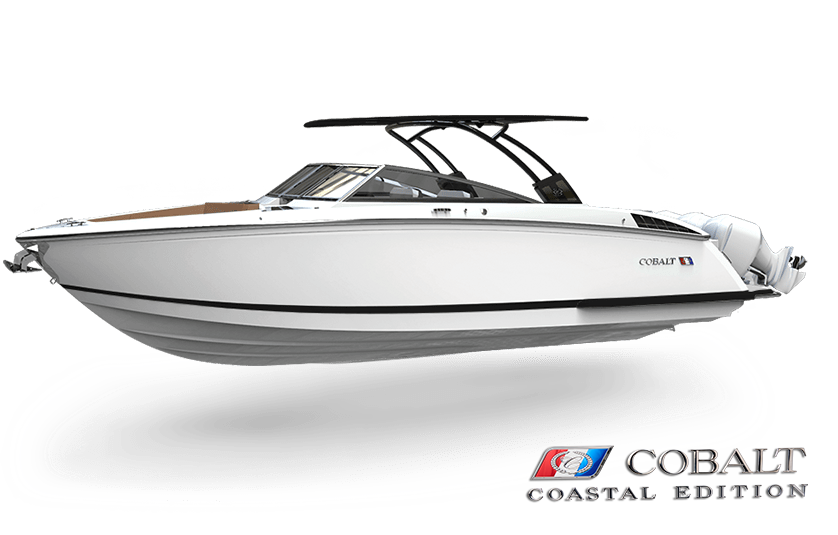 R33 Outboard
R33 Outboard 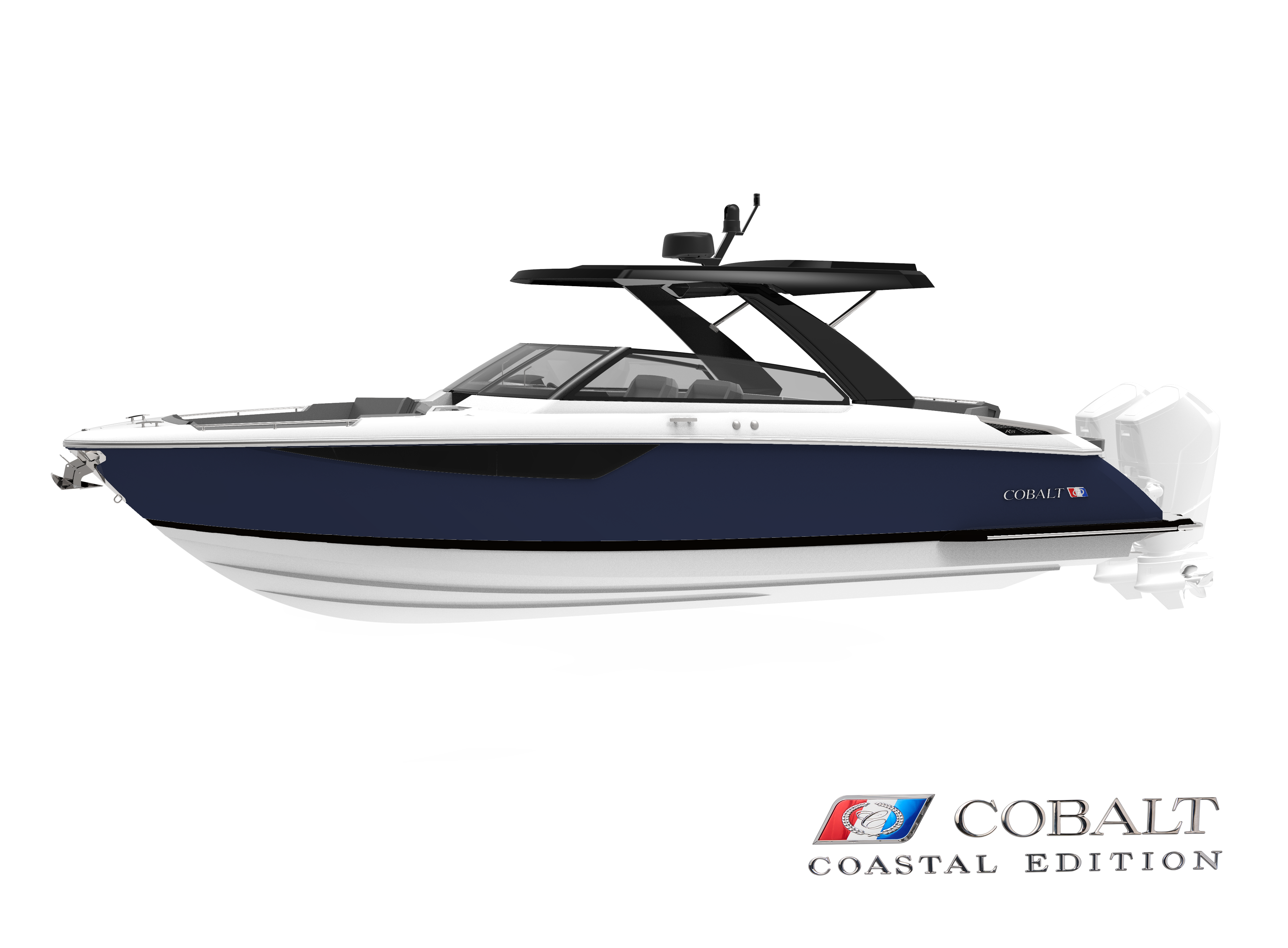 R35 Outboard
R35 Outboard 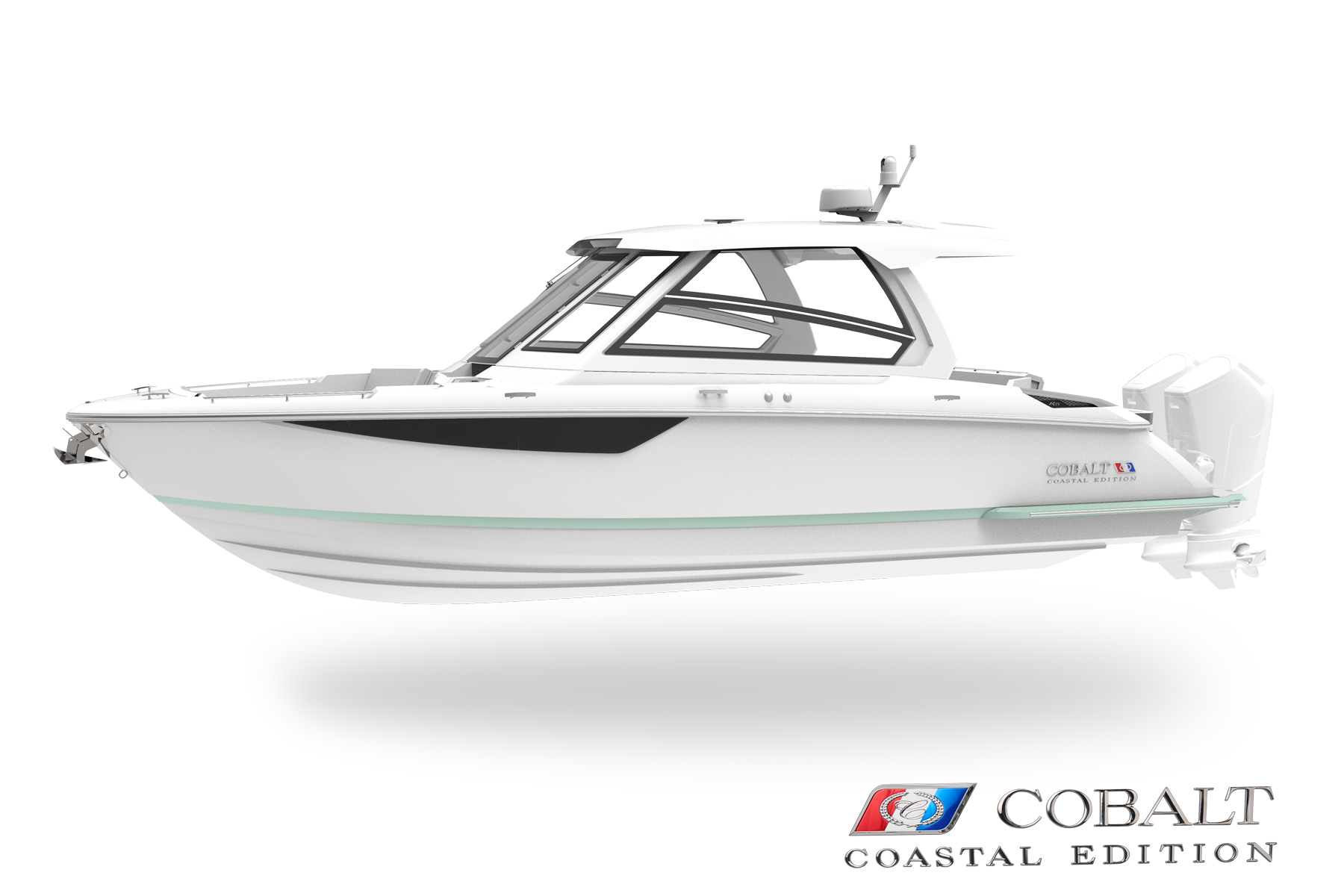 R35 Outboard Coupe
R35 Outboard Coupe